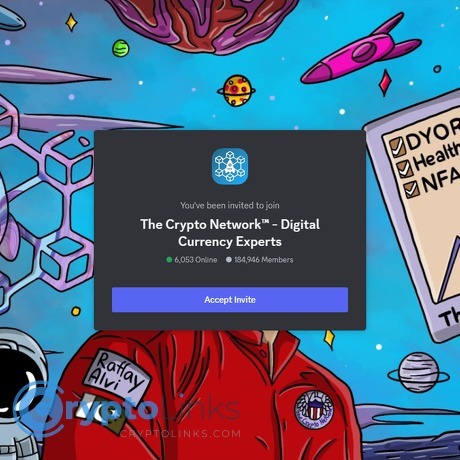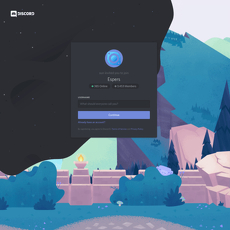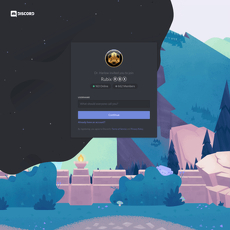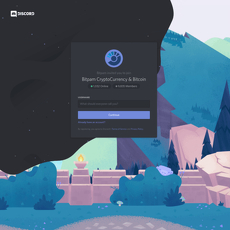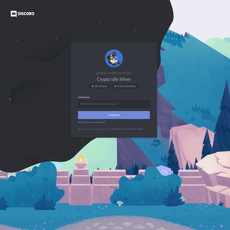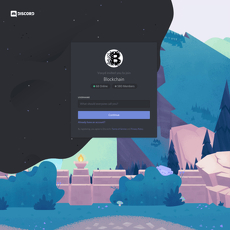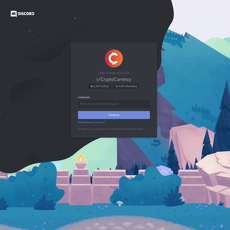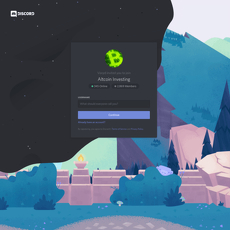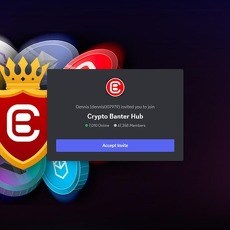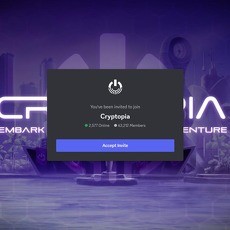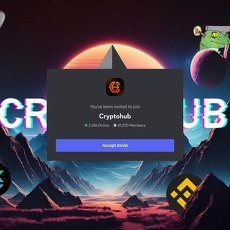The Crypto Network TM - Digital Currency Experts Review
The Crypto Network TM - Digital Currency Experts
discordapp.com
The Crypto Network™ (Discord) Review Guide: Everything You Need to Know + FAQ
Tired of crypto Discords that promise the moon, waste your time, and vanish when you ask real questions?
I’ve spent time inside The Crypto Network™, kicked the tires, and paid attention to what actually helps you learn and stay safe. If you want a smart, friendly place to get context without the chaos, this guide cuts through the noise so you don’t have to.
Let’s set expectations straight: a good crypto server won’t turn $100 into a Lambo overnight. What it can do is help you avoid rookie mistakes, understand market moves, and stop falling for flashy “signals” that leave you holding the bag.
Describe problems or pain
Crypto Discords are infamous for being hit or miss. You’ve probably seen at least one of these red flags:
- Hype over substance: “100x gem” calls with no reasoning. If there’s no risk section, it’s not education—it’s bait.
- Sketchy DMs: “Support” asking for your seed phrase, “team members” offering secret airdrops, or “whitelist” invites that redirect to fake sites.
- Messy channels: No pinned guides, no structure, just a constant firehose. Newcomers get lost; experienced users bounce.
- Low-quality “signals”: Copy-trade rooms that shout entries but never talk risk or exits. When it goes wrong, the chat goes quiet.
- Zero accountability: Mods who dodge hard questions or delete dissent. Echo chambers are bad for your wallet.
None of this is harmless. Real money gets lost when communities normalize bad habits. It’s not just anecdotal, either:
- The FBI’s 2023 Internet Crime Report flagged investment fraud as the largest category of losses, with crypto-related schemes playing a big role. Source: FBI IC3 2023
- Chainalysis notes that while some scam revenue trends have cooled, scams still make up a large share of crypto crime every year. Source: Chainalysis 2024 Crypto Crime Report
- The FTC has repeatedly warned about social-platform investment scams, where fake “experts” and impersonators lure users off-platform. Source: FTC Data Spotlight
“If you can’t explain your trade in one sentence, you probably shouldn’t be in it.”
That’s the bar I use when I check any crypto community. Clear thinking beats loud confidence every time.
Promise solution
In this guide, I’ll show you how The Crypto Network™ is set up, what real value it provides, how moderation and security are handled, and a simple plan to get value from day one—without getting overwhelmed.
What you’ll get in this guide
- A quick snapshot of the server and what to expect
- A feature breakdown focused on learning and usability
- Safety and trust checks you can reuse anywhere
- An easy onboarding plan so you don’t waste time
- A no-fluff FAQ on beginner coins, legit exchanges, and what Discord “digital currency” actually means
Who this review is for
- Newcomers who want structure, not spam
- Intermediate users who want sharper context and better tools
- Anyone who wants a cleaner, safer crypto community without drama
If you’ve been burned by noisy servers or you’re starting fresh and want to build good habits fast, you’re in the right place. Curious what the inside looks like and whether the “digital currency experts” label holds up? Keep reading—next I’ll show you what The Crypto Network™ looks like at a glance and how it’s organized so you can decide in minutes if it fits your style.
The Crypto Network™ at a glance
The Crypto Network™ is a crypto-focused Discord that actually feels usable the minute you land. You join via https://discord.gg/thecryptonetwork, and it opens into a community built around education, market context, and practical support — not hype.
- Focus: education-first crypto community with market discussions, tools, and active moderation
- Tone: calm, helpful, and grounded in real-world process
- Access: public entry via invite link; content framed as education
- Good for: beginners and time-strapped intermediates who want clear guidance
“Noise kills accounts; context saves them.”
Server layout and first impressions
I care a lot about how a crypto Discord is organized because layout is the first filter for quality. Here, categories are clean: you’ll see dedicated areas for learning, market talk, and support, plus clearly pinned starters. The rules are up front, and the team shows up in the open — that’s the baseline you want before you trust anything else.
- Clear categories: education, market chat, and help channels divided with obvious labels
- Pins that matter: wallet safety basics, exchange how‑tos, and quick links so you don’t wander
- Signal over sizzle: fewer meme dumps, more “here’s what this means and how to think about it”
UX research (think Nielsen Norman Group’s work on clarity and “information scent”) has long shown that straightforward labels and pinned guides reduce cognitive load. In crypto, that translates to fewer mistakes and faster progress. The Crypto Network™ leans into that simplicity, which instantly lowers the learning curve.
Who runs it and what they claim
The team positions themselves as digital currency experts. What I look for is transparency and a consistent teaching mindset: do they talk in frameworks or in lotto-ticket “calls”?
- Transparency markers: visible mods, house rules, and consistent guidance across channels
- Education posture: explanations and risk notes are the norm, not “ape now” theatrics
- Handling disagreement: critiques stay about ideas, not people — a big tell for maturity
The net effect is pro-learning, not quick-rug “signals.” You’ll see rationale and process language over hype. That doesn’t mean you’ll never see trade ideas; it means ideas are contextualized so you can actually learn from them.
Community vibe and activity
Healthy crypto servers have a heartbeat: steady conversation without drowning you. That’s the vibe here. New folks can ask basic questions and get straight answers without the eye-roll treatment.
- Quality > quantity: active chat that doesn’t feel like a slot machine
- Beginner-safe: “What is gas?” and “How do I choose an exchange?” get useful replies, not sarcasm
- Constructive tone: context like “news likely priced in; watch your sizing and time horizon”
That psychological safety matters. When people feel safe asking “obvious” questions, they learn faster — and they avoid the classic traps that wipe accounts. It’s noticeable here.
What it’s best for
- Beginners: if you’ve been overwhelmed by noisy servers, this structure will feel like a breath of fresh air
- Intermediate users: helpful for sharpening decision-making, filtering headlines, and staying on a learning track
- Advanced traders: still useful for sentiment checks, networking, and keeping a pulse on retail narratives
If a server’s layout sets the tone, the real test is what you actually get from the channels, tools, and live sessions. Want to know which parts truly move the needle — and which to mute so you don’t chase every blip?
Features, channels, and real value
I’m allergic to noisy Discords. What I look for is simple: does the server make me smarter, faster, and safer with my decisions? Inside The Crypto Network™, a few channels do the heavy lifting — and if you stick to them, you’ll skip months of trial-and-error.
“Clarity beats speed. If you can’t write the reason for a trade in one line, you don’t have one.”
Education channels and pinned guides
This is where most crypto Discords cut corners. Here, the foundational topics are organized and easy to follow — not buried under memes. Expect pinned posts that walk you through:
- Wallet safety 101: seed phrase storage, hardware wallet setup, allowance revokes, and a simple “before every click” checklist.
- Exchange walkthroughs: how to verify the right app/URL, set withdrawal whitelists, and sandbox your first deposit with a tiny amount.
- Risk basics: position sizing with examples, stop-loss placement, and a no-nonsense glossary so you stop guessing what funding or OI means.
- DYOR framework: how to vet a project’s docs, token unlocks, team credibility, and practical red flags (domain history, GitHub, and impostor socials).
There are also fast “2-minute explainers” that do something rare: they teach why something works, not just what to click. That matters. Research on checklists in complex tasks (popularized by Atul Gawande’s work) shows error rates can drop dramatically when you use simple, repeatable steps. In trading, that translates to fewer “oops” trades and better consistency. Pair that with a journal template they share, and you’ve got a way to measure your progress, not just vibe it. For context, studies on retail behavior (see Barber & Odean) have long shown that unstructured, impulsive trading leads to overtrading and worse outcomes — routines beat impulses.
Sample pinned mini-playbook you’ll actually use:
- Define the idea in one line: “ETH reclaiming weekly level, targeting prior range high.”
- Set invalidation: “Invalid if weekly closes back below X.”
- Choose size: “0.5% account risk, capped.”
- Note catalyst: “ETF flows + funding reset.”
- Pre-commit exit: “Take partial at level Y; move stop to break-even.”
Market commentary and alerts
The server’s market chat is active, but it isn’t a parade of moon emojis. That’s the point. You’ll see idea-style alerts with context, not blind signals.
What a healthy “alert” looks like here:
- Thesis: “BTC range developing post-ETF inflows; watching acceptance above range mid for continuation.”
- Invalidation: “Idea off if we close below prior weekly open.”
- Risk comment: “High-vol zone; use hard stops and smaller size.”
- Time horizon: “1–3 days; not a long-term call.”
During key weeks — think the Bitcoin halving or ETH ETF launch — mods post scenarios, not predictions: “If A, then likely B; if not, abandon.” That framing keeps you from forcing trades. It also lines up with what market research repeatedly shows: crowding and FOMO tend to spike around headline events, and traders who predefine invalidation reduce drawdowns versus those who “feel it out.”
They also nudge good habits: tagging funding flips, open interest wipes, or exchange inflow spikes alongside a note about what would prove the idea wrong. Tiny detail, huge difference.
Tools, bots, and dashboards
Tools are like gym equipment — great if you know how to use them, dangerous if you don’t. The good news: the server’s bots aren’t just blasting numbers; they’re paired with explanations so you don’t chase every blip.
- Price and level bots: quick snapshots with HTF/LTF levels so you don’t trade blind.
- On-chain and flows: exchange netflows, stablecoin prints, and wallet activity to separate narrative from actual movement. For instance, a BTC outflow spike gets a short take: “Could be custody rotation; watch follow-through.”
- Derivatives context: funding, open interest, liquidation maps. When funding goes extreme, the chat reminds you it often signals crowded positioning — useful, not magical.
- News feeds with TL;DR: headlines tagged by impact (low/medium/high) so you can ignore noise and focus on what actually moves price or liquidity.
There’s a reason this matters. Crypto reacts to positioning as much as to headlines. A handful of academic and industry studies note that extreme funding or rapid OI expansions often precede sharp mean-reversions — not always, but often enough to use as a risk prompt. The server treats these as context, not commands.
Events, AMAs, and coaching
Live sessions are where beginners get unstuck fast and busier traders get condensed value.
- AMAs with practitioners: on-chain analysts, security pros, and market makers answering “dumb” questions without ego.
- Workshops: wallet setup clinics, “first trade” simulations, and risk labs where you practice sizing with sample portfolios.
- Office hours: structured Q&A blocks with replays and timestamps, so you can jump right to “Funding vs. Spot: which matters here?” without wasting time.
One session I liked broke down an ETH move step-by-step: from the narrative (ETF flows) to the data (funding reset, OI build), to a simple plan (levels + invalidation). It’s the kind of coaching that turns “I think” into “Here’s the plan.”
Who gets the most value
- Newcomers who want a clear path: structured guides, checklists, and someone to sanity-check your first steps.
- Busy professionals who need a curated feed: high-signal commentary, TL;DR news, and replays you can watch at 1.5x.
- Traders who like guardrails: idea-format alerts, invalidation-first thinking, and data that keeps you from YOLO-ing into noise.
Everything above works best when the room is safe and well-moderated. Channels can be gold, but scams thrive wherever people gather. So the real question is: how do you know the place enforcing those rules is actually legit — and what should you check before trusting any crypto community?
Safety, trust, and “is this legit?”
Every crypto win starts with one thing: not getting burned. I’ve watched smart people lose money because a Discord DM felt friendly, a link looked “official,” or a group promised what the market never does—certainty. The Crypto Network™ earns points for how it treats safety, but I still approach every community with the same framework.
“Trust isn’t a feature; it’s a habit—built in public, enforced daily, and verified by you.”
Moderation and rules
This server’s guardrails hit the right notes: a strict no-DM-first policy, zero tolerance for seed phrase requests, and frequent reminders about impersonators. That matters because most Discord scams don’t happen in public—they happen in your inbox.
- No-DM-first: If anyone messages you “from the team,” assume it’s a fake until proven otherwise. Real helpers talk in public channels or use clearly verified profiles.
- Seed phrase ban: Legit support will never ask for your seed phrase, recovery codes, or private keys. Not today, not ever.
- Impersonator alerts: Scammers mirror mod names using subtle character swaps (homoglyphs) and clone avatars. If the handle looks “almost right,” it’s wrong.
My everyday protocol that keeps me safe here and anywhere on Discord:
- Disable server DMs: Go to Privacy Settings → uncheck “Allow direct messages.” Turn it on per-friend only.
- Verify links in public: Ask a mod to confirm any link before clicking. Hover, inspect, and compare domains character-by-character.
- Assume urgency = scam: Airdrop countdowns, “support” asking for remote access, or “limited spots” are classic pressure tactics.
Why I care this much: the FTC reports consumers lost over $1 billion to crypto scams since 2021, with social platforms being the #1 contact point. Chainalysis notes scamming remains the largest source of crypto crime by revenue globally; it’s not getting “less clever,” just more polished. Your habits are your firewall.
How to judge legitimacy in any crypto group
- Transparent team and clear rules: Public-facing mods, written policies, and consistent enforcement.
- Education over hype: Teaching risk, process, and context beats “next 100x.” Look for reasoning, not emojis.
- Receipts: Sources cited, charts linked, and on-chain or reputable data where claims are made.
- No guarantees: Any promise of returns is a red flag. Markets don’t care about Discord confidence.
- Clear monetization: If there’s a paid tier, it should be plainly explained—what you get, what you don’t, and what’s free.
In The Crypto Network™, the north star is education. That’s a green flag. I still verify behavior over branding: are mods de-escalating hype, linking sources, and shutting down DMs? So far, yes.
How to know a legit crypto exchange?
Before you trust an exchange with a cent, run this quick, practical checklist:
- Licensed where you live: Search official registers—UK’s FCA, Singapore’s MAS, or New York’s NYDFS list. No listing, no trust.
- Proven uptime and withdrawals: Check a public status page and real user reports. Do a tiny test deposit and withdrawal. If they stall or pressure you, walk.
- Security track: 2FA (TOTP), allowlists, withdrawal delays, and transparent incident reports. Bonus: SOC 2, bug bounty, cold storage policies.
- Proof-of-reserves (with context): A Merkle tree alone isn’t enough. Look for auditor involvement and liabilities disclosure, not just assets.
- Official domain hygiene: HTTPS, HSTS, the exact URL from verified social profiles. Bookmark it. Search engines show lookalikes all the time.
- Support responsiveness: Real ticketing, clear SLAs, and human replies within reasonable time. Ghosted support = unacceptable risk.
Tip: treat every exchange like it could freeze tomorrow. Keep only what you actively trade there and move the rest to self-custody you control.
Costs, upsells, and expectations
If a community offers premium tiers, I’m fine with it—if the value is specific and the pitch is honest. Here’s how I sanity-check paid offers anywhere, including here:
- Try before you buy: Free content should stand on its own. If the free tier is fluff, paid won’t fix it.
- Specific deliverables: Curriculum, schedules, replays, and clear access—no “secret alpha” promises.
- Transparent pricing: No dark patterns, fake countdowns, or “guaranteed profits.” Education-only claims are the right stance.
- Ask for boundaries: Are “ideas” framed with risk assumptions and position sizing? Or pitched as signals? The former teaches. The latter traps.
The Crypto Network™ frames content as education, which aligns with how I think people actually improve: repeatable habits, not one-off tips.
One last emotional checkpoint I use before I click anything: “If I lost this money in the next 10 minutes, would I be okay with how I decided?” If the answer is no, I slow down. Simple rule, saves headaches.
Ready to protect your time and sanity while actually getting value from a crypto Discord? In the next section, I’m sharing the exact first-week plan I use to cut noise, lock down settings, and learn faster—want the step-by-step checklist I’d give a friend?
Getting started the smart way
You can make your first week inside The Crypto Network™ count. The trick is to cut out noise, set up your feed the right way, and ask smart questions early.
“Small, consistent steps beat lucky guesses. Your edge is process, not prediction.”
Step-by-step join plan
- Join via invite: https://discord.gg/thecryptonetwork. Let the welcome flow finish so roles populate properly.
- Read rules + security first: Open the rules channel, scroll to the end, and click through any linked safety docs. This sets your default “don’t get scammed” posture for everything else.
- Tune notifications in 90 seconds:
- Right-click the server icon → Notification Settings → set to Only @mentions.
- Mute high-chatter channels you don’t need yet. You can always unmute later.
- Add Keyword Notifications for terms you care about (example: “ETF”, “hardware wallet”, “security”).
- Pick your roles: If the server uses role menus, select interests (e.g., beginner, spot trading, security). This unlocks relevant channels and filters your view.
- Bookmark the right places:
- Open the main education channels and click Add to Favorites so they sit at the top of your sidebar.
- Click the pin icon in each channel to read the pinned starters and checklists. These are your “don’t make rookie mistakes” posts.
- Introduce yourself with intent: In the intro channel, post something like: “Hey all, I’m exploring spot only. I want to learn wallet safety and basic risk sizing. One question: what’s a good first step to test an exchange safely?”
- Follow 1–2 channels closely; mute the rest: Quality > quantity. For week one, stick to education + one market chat. You’ll learn faster than trying to read everything.
Beginner learning path (yes, you can learn on your own)
Here’s a simple, self-directed path that stands up in the real world.
- Wallet safety
- Set up a reputable non-custodial wallet and write the seed phrase on paper (twice), stored in two separate places. Never type it into a website or share it—ever.
- Consider a hardware wallet for long-term funds. Use your hot wallet only for small, active balances.
- Exchanges 101
- Create an account on a well-reviewed, regulated exchange in your region.
- Do a small test: deposit $10–$25, buy a tiny amount of BTC or ETH, withdraw to your own wallet. Confirm the transaction on a block explorer (that click teaches you a lot).
- Risk management before returns
- Decide a max loss per idea (e.g., 0.5%–1% of your total portfolio) and stick to it. For spot, that usually means sizing small and avoiding panic buys.
- Aim for no leverage while you’re learning. Spot first. Consistent sizing beats inconsistent wins.
- Journal your decisions
- Keep one simple doc: date, asset, reason to buy, what would make you sell, and what you learned.
- Behavioral research in finance shows that pre-committing your plan reduces impulsive errors. Writing it down is a cheat code for discipline.
- Ask for feedback
- Post a small trade idea in the right channel with your reasoning and risk plan. Ask: “What’s the blind spot I’m missing?”
- Feedback is worth more than predictions. You’ll improve faster than lurking.
Why this works: you learn the mechanics (wallets, explorers, withdrawals) while building habits that stop common losses. Chainalysis and other industry reports repeatedly show that social engineering and phishing are the top ways people lose funds—not “bad picks.” Process protects you.
What is Discord’s “digital currency”?
From time to time, Discord tests platform rewards like Orbs—points for in-app perks. They are not crypto, not on-chain, and have nothing to do with your portfolio. If anyone tries to sell you “Discord tokens,” walk away. It’s just a platform feature, not an investment.
Staying safe daily
- Use 2FA everywhere. App-based 2FA or security keys massively reduce account takeovers. Google’s public data shows strong 2FA blocks most automated and phishing attacks.
- Disable DMs from server members. Server Settings → Privacy → “Allow direct messages from server members” off. Scammers love cold DMs.
- Split funds across wallets. One hot wallet for small, active use; one hardware wallet for long-term. Assume your hot wallet can get compromised and size accordingly.
- Verify every link. Check the domain carefully before you connect a wallet. When in doubt, find the link from the project’s official site or socials—not from a chat message.
- No surprise airdrops, ever. If a DM says “urgent” or “exclusive,” that’s the red flag. Real opportunities won’t need urgency tricks.
More resources you can check next
If you want a deeper bench of tools and reading, take a look at: {{longresources}}
Also, keep The Crypto Network™ handy and revisit the pinned checklists weekly—you’ll catch new tips as your experience grows.
Ready for the rapid-fire answers everyone asks—like “What’s the best coin to start with?” and “How do I spot a legit exchange fast?” Let’s tackle those next.
FAQ: Quick, honest answers
What is the best crypto for beginners?
I keep it simple: Bitcoin (BTC) and Ethereum (ETH). They have the deepest liquidity, the most reliable tooling, and the widest amount of education available. If you’re in a region that offers spot ETFs, many beginners prefer starting with regulated options like the iShares Bitcoin Trust (IBIT) or Fidelity’s FBTC for BTC, and the new U.S. spot ETH ETFs for Ethereum. ETFs remove self-custody complexity but add fees and don’t let you use on-chain apps—trade-offs worth knowing.
How to start without burning out:
- Size small (think $10–$50 recurring buys) and focus on learning, not “winning.”
- Automate a weekly buy (DCA) so you aren’t chasing green candles.
- Journal every decision: what you bought, why, and what would make you exit.
BIS research found that the majority of retail crypto traders lost money during major cycles (2015–2022). That’s why small sizing and a written process matter more than hot tips.
Source: Bank for International Settlements, “Crypto shocks and retail losses” (BIS Bulletin No 77)
How do I know a crypto exchange is legit?
Here’s my short checklist that’s saved people headaches:
- Regulatory status: Check if it’s licensed/registered where you live (e.g., US state MTLs + FinCEN MSB, UK FCA registration, EU MiCA alignment, Canada FINTRAC). Verify on the regulator’s official site, not just the exchange’s landing page.
- Security track record: Look for cold storage percentages, SOC 2 Type II audits, bug bounties, and public incident reports. “Proof-of-reserves” is useful but not sufficient unless liabilities are also disclosed.
- Withdrawal test: Send in $10, withdraw $9.75. If that’s clunky, slow, or support is MIA, that’s your answer.
- Official links only: Bookmark the domain, enable 2FA (preferably an authenticator app or hardware key), and never use links from DMs or Google Ads.
- Status and support: A public status page, real-time incident updates, and support that replies in hours—not weeks—are green flags.
Real-world example: After the FTX collapse, many users realized “reputable on Twitter” isn’t due diligence. A small withdrawal test and checking licenses would have saved fortunes. Make those checks routine.
Can I learn crypto by myself?
Yes—if you turn learning into a habit. A quick 4-week starter plan I’ve seen work:
- Week 1: Wallet security 101. Practice creating a wallet, writing a seed phrase offline, and doing a small test transfer. Learn how to spot phishing.
- Week 2: Exchanges and fees. Place mock limit and market orders, understand maker/taker fees, and run a tiny deposit/withdrawal test.
- Week 3: Risk rules. Cap risk per trade (e.g., 0.5%–1%), set invalidation points, and write an exit plan before you enter.
- Week 4: On-chain basics and scams. Learn how explorers (e.g., Etherscan) work, and review 10 common scams so you can spot them on sight.
What is the Discord “digital currency” I keep hearing about?
Those are platform rewards (often called things like “Orbs”). They’re not crypto, not on-chain, and not something you buy for your portfolio. Treat them like in-app points. If someone messages you promising “Discord coins that 10x,” that’s a scam angle—ignore and report.
Is The Crypto Network™ legit and worth joining?
Yes. It’s moderated, transparent about rules, and built around education over hype. You’ll find pinned “start here” posts, security reminders, and ongoing discussions that explain why an idea might make sense, not just what to click. Join for free, lurk for a day, and see if the teaching style matches how you like to learn.
Do they promise profits or provide signals?
No promises—thankfully. You may see trade ideas or levels, but they’re framed as education. I treat every idea as a starting point for my own research. A simple approach:
- Define invalidation: “I’m wrong if ETH closes below X.”
- Pre-set risk: “I’ll risk 1% of my account on this idea.”
- Position size from risk: Account risk / distance to stop = size. If that size feels too big, your stop is too tight or your risk is too high.
Signals without risk rules aren’t signals—they’re noise. Keep the rules, ignore the noise.
What if I’m totally new?
Start lean and safe. Here’s a one-day kickoff plan I give friends:
- Turn on 2FA everywhere and write security notes you’ll actually remember.
- Read the pinned “basics” posts and wallet safety notes before you click any links.
- Choose BTC or ETH, start with $20–$50, and write down your reason for buying.
- Ask one focused question in the education channel. Keep it specific.
- Avoid leverage and NFTs for now. Your only goal this week: don’t make an irreversible mistake.
Pro tip: Set calendar reminders for recurring buys and a 10-minute weekly review of your notes. Consistency compounds.
Still wondering whether this community fits your style and goals? In the next section, I’ll show you a 10-minute test I use to decide if a crypto server is worth my time—want the checklist?
Final verdict and next steps
The Crypto Network™ feels like one of the rare Discord communities that actually makes crypto less chaotic. It’s steady, structured, and refreshingly human. I’ve seen plenty of servers that spike your dopamine and drain your bankroll. This one does the opposite: it slows you down just enough to make better decisions.
Two quick moments stood out. First, I tossed a practical question into chat about position sizing on spot trades. A mod shared a simple risk formula (1% account risk divided by the distance between entry and stop), added a plain-English example, and linked to a free position size calculator—no sales pitch attached. Second, I watched a newcomer ask a “basic” wallet question and get a clean, step-by-step answer with vendor links and a reminder to test a $5 withdrawal first. That’s the kind of handrail most people need.
Independent research backs this kind of environment. Group-learning studies (think of the well-known work on “collective intelligence”) consistently show that clear norms and respectful feedback improve outcomes. And yes, crypto-specific reports from firms like Chainalysis keep warning that social engineering is still a top risk, so a community that drills safety and no-DM rules isn’t just nice—it’s necessary.
Who should join today
- Beginners who want a clean path, not a maze of jargon and hype.
- Intermediates who want context, tools, and calm discussion to sharpen their process.
- Busy people who prefer curated insights over scrolling a thousand charts.
- Safety-first learners who appreciate firm moderation and scam awareness.
How to decide in 10 minutes
- Join the server and skim the rules.
- Open the education channels and read the latest pinned post.
- Ask one focused question (examples: “Best way to test a withdrawal?” or “How do you size a spot trade with a defined stop?”).
- Judge the replies: are they respectful, specific, and backed by resources?
If the answers help you act safely and think clearly—not just chase a ticker—you’ve found the right room.
My bottom line
Worth joining, and worth sticking around if you’re serious about learning. This isn’t a signals casino; it’s a place to build your playbook. Treat it like a gym for your process:
- Show up a few times a week.
- Ask targeted questions.
- Keep a simple journal of decisions and outcomes.
- Use community feedback to tighten risk and avoid avoidable mistakes.
If you do that, you’ll save time, cut noise, and feel a lot more confident navigating crypto. Ready to try it for yourself? Jump in here and see how it fits your style. Not financial advice—just a smarter way to learn.
CryptoLinks.com does not endorse, promote, or associate with Discord servers that offer or imply unrealistic returns through potentially unethical practices. Our mission remains to guide the community toward safe, informed, and ethical participation in the cryptocurrency space. We urge our readers and the wider crypto community to remain vigilant, to conduct thorough research, and to always consider the broader implications of their investment choices.

